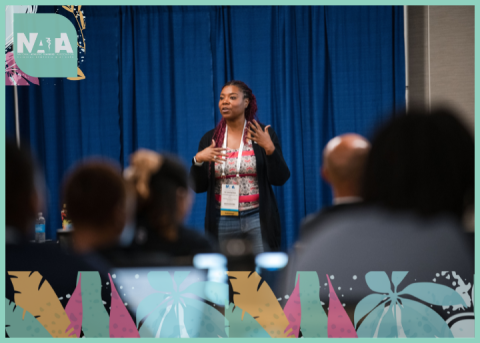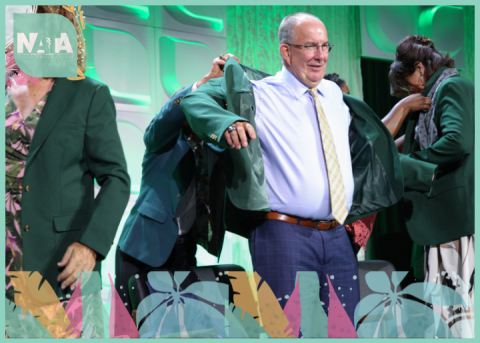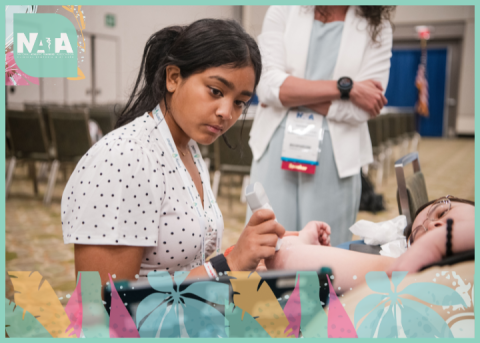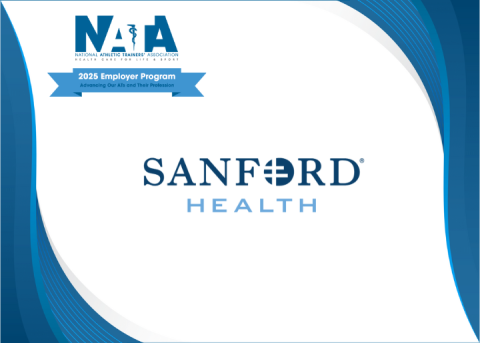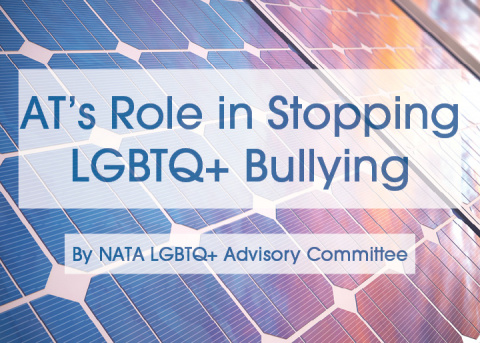
By Dani Moffit, PhD, ATC, and Glenn Edgerton, EdD, ATC
Editor’s note: Throughout June, NATA News will share content written by members of the NATA LGBTQ+ Advisory Committee related different facets of LGBTQ+ health and patient care.
Each time a LGBTQ+ person is victimized, such as physically or verbally harassed or abused, the likelihood of self-harming behavior increases by 2.5 on average.1 Their support system may be limited, or they might be hesitant to open up to peers or adults, such as parents, teachers, administrators and even athletic trainers. When a person is victimized, they should be comfortable in a space to talk openly about their experiences as LGBTQ+ and be heard.
Athletic trainers can do that.
Consider the following questions from your perspective and experience as an athletic trainer:
- Have you thought about the inclusivity of your facility?
- Have you thought about the environment in which your athletes are walking into and receiving care, and if there is an atmosphere of bullying?
- Do all of your athletes feel safe in the athletic training facility?
- Do you see bullying and say nothing?
In one study, 90 percent of the educators surveyed admitted to observing LGBTQ+ harassment and/or bullying, but only 30 percent admitted to intervening.5 In another survey, high school students said degrading words such as “fag,” “queer,” “dyke,” “homo” or “gay” are so common that 98 percent of adolescents have heard such words at school, and 51 percent report hearing them on a daily basis.6
Athletic spaces on campuses and in public schools can be hostile for lesbian, gay, bisexual, transgender and queer/questioning students.3 According to the Canadian Association for the Advancement of Women and Sports, bullying can happen to athletes who identify as LGBTQ+ in several ways, including being subjected to initiation and hazing rituals, negative recruiting, peer violence and degradation by negative comments that makes the person feel less than safe.4 Often, people may become the abuser to protect themself.4 This is concerning as athletics is supposed to be a place of teamwork where a person can feel safe and identify an athlete.
Bullying can damage the psychological well-being of students. Peer victimization is a significant health concern linked to outcomes such as depression, loneliness, social anxiety and low self-esteem with the LGBTQ+ populations bearing a disproportionate burden of mental health problems.2,5,7 Boys bullied by being called “gay,” for being gay or perceived to be gay are at a greater risk of psychological distress, and more physical and verbal abuse than students bullied for other reasons.6
Those bullied because of sexual orientation are more likely to drink alone; are isolated and withdrawn for fear of consequences; have an increased risk for psychosocial problems (e.g., drug/alcohol abuse, depression); on average, smoke more than six cigarettes per day; have relationship problems; are at increased risk for suicidal feelings; and are two to three times more likely to attempt suicide.6
At the college/university level, the American College Health Association’s National College Health Assessment showed that female sexual minority student athletes (a group whose sexual identity, orientation or practices differ from the majority of the surrounding society8) reported lower rates of negative health outcomes when compared to nonathlete peers. However, sexual minority student athletes had a higher risk of experiencing mental health difficulties than their heterosexual athlete peers.9 Substance abuse was greater among sexual minority students, both athlete and nonathlete, as well.9
A separate study found that sexual minority collegiate athletes had greater odds of past 30-day cigarette use, past 30-day alcohol use, past 30-day marijuana use and indicated being diagnosed or treated for a substance use disorder during the past 12 months when compared to either heterosexual collegiate athletes or heterosexual nonathletes.10
As a health care provider, athletic trainers have a responsibility to the patients they treat. This is a chance to make a difference in someone’s life.
Be proactive; don’t ignore bullying, it will not go away on its own. Develop an environment of respect and caring for all student athletes in your athletic training facility.
One way to do this is by providing a Safe Zone for all athletes and being open to learning more about the student athletes who are entrusted into your care.
ATs should establish clear policies against hurtful teasing and bullying. ATs can stop the bullying with simple, quick responses such as, “It doesn’t matter who said it, I don’t want to hear that kind of language again. Is that clear?” or “Using the word ‘homo’ to tease someone is harassment and is unacceptable.”
If there is time to educate the individuals, do it on the spot. If not, make time later. This should be a lesson on respect, prejudice and civil rights.
Become an ally that stands up for student athletes who are harassed.11
Athletic trainers have the opportunity to create a safe and welcoming environment, essential for student athlete success. You are a critical component in creating that environment.11
References
1. The Trevor Project. Retrieved from https://www.thetrevorproject.org/resources/preventing-suicide/facts-abou...
2. Collier, K.L., Bos, H.M.W., Sandfort, T.G.M. (2013). Homophobic name-calling among secondary school students and its implications for mental health. Journal of Youth and Adolescence. 42:363-375.
3. Atteberry-Ash, B., Woodford, M.R., Spectrum Center. (2018). Support for policy protecting LGBT student athletes among heterosexual students participating in club and intercollegiate sports. Sexuality Research and Social Policy. 15:151-162.
4. Kirby, S.L., Demers, G., Parent, S. (2008). Vulnerability/prevention: considering the needs of disabled and gay athletes in the context of sexual harassment and abuse. USEP. 6:407-426.
5. Dragowski, E., McCabe, P., Rubinson, F. (2016). Educators’ reports on incidence of harassment and advocacy toward LGBTQ students. Psychology in the Schools. 53(2):127-142.
6. Bishop, H.N., Casida, H. (2011). Preventing bullying and harassment of sexual minority students in schools. The Clearing House. 84:134-138.
7. Martin-Storey, A., Crosnoe, R. (2012). Sexual minority status, peer harassment, and adolescent depression. The Journal of Adolescence. 35:1001-1011.
8. Wikipedia. Retrieved from https://en.wikipedia.org/wiki/Sexual_minority
9. Droshus, E., Davoren, A.K. (2016). Mental health and substance use of sexual minority college athletes. Journal of the American College of Health. 64(5):371-379.
10. Veliz, P., Epstein-Ngo, Q., Zdroik, J., Boyd, C.J., McCabe, S.E. (2016). Substance use among sexual minority collegiate athletes: A national study. Substance Use & Abuse. 51(4):517-532.
11. Welcoming Schools. Retrieved from http://www.welcomingschools.org/pages/stop-thats-so-gay-anti-lgbtq-comme...

